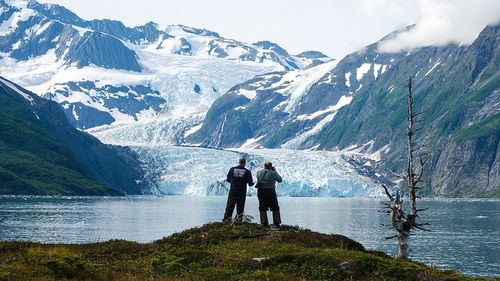Reforestation and regenerative agriculture are critical components in the fight against global warming, two interrelated methodologies that offer promising solutions for restoring ecological balance. Both are vital in combatting the relentless pace of climate change. They invite a shift in perspective, urging us to recognize our responsibility toward the planet and the potential of nature to heal itself when given the right resources and respect.
At the heart of these restoration efforts lies the undeniable importance of trees. Forests are often referred to as the lungs of our planet, absorbing carbon dioxide and releasing oxygen. The process of reforestation involves replanting trees in areas that have been deforested or degraded. This practice not only sequesters carbon emissions but also restores biodiversity, improves soil health, and regulates water cycles. As forests regrow, they provide habitat for countless species, contribute to local communities, and enhance the resilience of ecosystems against the exacerbating effects of climate change.
Regenerative agriculture, on the other hand, rethinks the agronomic practices that dominate modern farming. It emphasizes holistic methods that improve the health of soils and ecosystems while simultaneously increasing agricultural productivity. This approach includes techniques such as cover cropping, crop rotation, agroforestry, and reduced tillage, all of which contribute to soil carbon sequestration. Healthy soils act as significant carbon sinks, effectively pulling carbon from the atmosphere and storing it underground, thereby mitigating the impacts of global warming.
The intersection of reforestation and regenerative agriculture is particularly potent. As regenerative practices are employed in agricultural landscapes, they can enhance the conditions for natural forest regeneration, leading to forest restoration and afforestation efforts. This synergy maximizes carbon capture while also delivering additional environmental benefits, such as improved water quality and decreased erosion.
However, the question remains: how can these strategies significantly curb global warming? The answer lies in their collective capacity to reverse some of the damage inflicted by decades of industrial practices. The Intergovernmental Panel on Climate Change (IPCC) has underscored that the conservation and restoration of forests, alongside sustainable agricultural practices, are essential for meeting global climate targets. Reforestation efforts alone have the potential to remove approximately 1.1 to 1.6 billion tons of carbon dioxide per year, a substantial contribution to lowering atmospheric CO2 levels.
Moreover, when coupled with regenerative agriculture, the impact becomes even more pronounced. Regenerative techniques not only enhance soil health but also increase the biotic activity in the soil, a crucial factor in carbon storage. Microbial ecosystems flourish under these practices, leading to enhanced nutrient cycling and increased resilience to climate-related stresses, such as drought or flooding. These benefits align seamlessly with reforestation efforts, as healthier ecosystems can support a more robust and diverse forest structure.
Furthermore, both methods promote a shift towards community-engaged solutions. By involving local populations in reforestation and regenerative agriculture projects, communities become stewards of the land. They not only reclaim their territory but also improve their livelihoods. This participatory approach fosters a collective sense of responsibility and encourages traditional practices that have sustained ecosystems for generations. In many cases, indigenous knowledge serves as a guiding light for implementing sustainable practices that harmonize with natural processes.
In terms of economic benefits, reforestation and regenerative agriculture can be transformative. They present a compelling alternative to the destructive practices associated with industrial agriculture and deforestation. By creating sustainable systems, these practices lead to the generation of jobs in rural areas, stimulate local economies, and provide a diverse array of products, ranging from timber and fruits to medicinal plants and fibers. The emergent green economy not only curbs emissions but also roots communities in stability and resilience.
The larger ecological narrative remains vital to understanding the full potential of these approaches. Reforestation and regenerative agriculture contribute to enhanced climate resilience, making ecosystems less vulnerable to the fluctuations wrought by a warming planet. As natural systems recover, they can better withstand the adverse impacts of extreme weather events, such as hurricanes, floods, and prolonged droughts. This resilience is crucial, particularly for the most vulnerable populations that depend directly on these ecosystems for their survival.
Policy frameworks must evolve to support these practices. Governments can implement incentives for landowners who commit to reforestation and sustainable agricultural practices, such as tax breaks or subsidies for ecosystem services. Policymakers need to collaborate with scientists, environmental organizations, and local communities to design and execute strategies that create viable pathways for large-scale implementation of these methodologies.
It is imperative to integrate education and awareness into this movement. Public understanding is essential in fostering a culture of sustainability. When individuals recognize the role they play in the larger ecological tapestry, they are more likely to support and participate in restoration efforts. Educational initiatives can empower communities to harness the ecological wealth of their regions while simultaneously playing an active role in climate mitigation.
In conclusion, reforestation and regenerative agriculture embody a roadmap toward environmental rehabilitation. Their alignment offers a multifaceted approach to tackling global warming—sequestering carbon, restoring biodiversity, empowering communities, and enriching economies. By embracing these strategies, we can restore the earth, enhancing your ecological integrity for generations to come. As we nurture our planet, we also tend to our future, illustrating that the path to sustainability lies in working with nature rather than against it.







